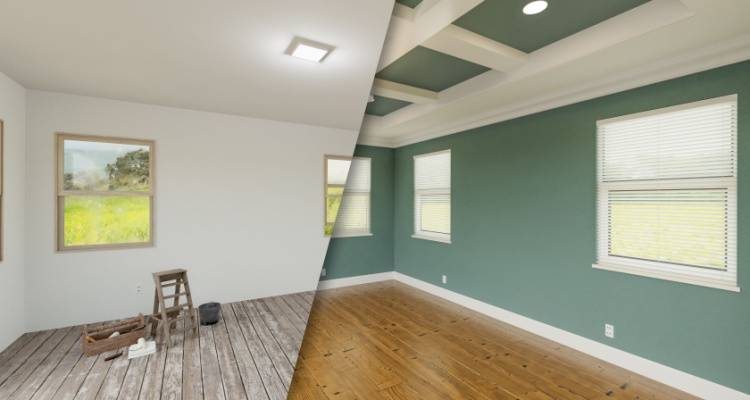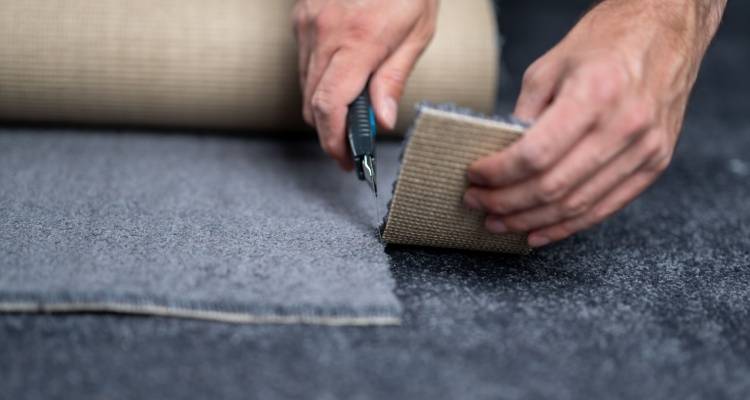5 Ways to Keep Your Home Warm This Autumn and Winter
While we all soak up the sun, it’s more than worth your time to think ahead to ensure your home will stay warm during the autumn and winter months!
In this guide, we’ll discuss five ways to keep your home warm during the latter half of the year while looking at what these measures involve and their costs.
Let’s go!

Improved Insulation
Check Your Windows
Fix Damp Issues
Boiler Servicing
Minimise Draughts
First and foremost, you’ll want to consider taking steps to improve your home’s insulation. While on the more expensive side, improved insulation can make a huge difference in your property’s ability to keep the heat in.
Insulation may come in the form of wall insulation, loft insulation, or even floorboard insulation. For each of these categories, there are different types of insulation in terms of the material/design used.
Cavity wall insulation costs approximately £400 to £800. However, internal wall insulation for a property will likely cost around £4,000 to £15,000. Alternatively, solid wall insulation (for external walls) is priced between £7,000 and £20,000.
Moving on to fitting loft insulation, the price of this job can range from as little as a couple of hundred pounds to more than £2,500. The main factor here will be the material/type of loft insulation. Lastly, floorboard insulation will probably set you back somewhere in the region of £1,000 to £1,800.
Next, you should check your windows. You may need to fix or even consider replacing them to help keep your home warm in the autumn and winter.
One approach you can take DIY (once you proceed with caution and know that no gas is filling the air - e.g., from a gas stove you’ve left on) is to light a match and hold it carefully next to a window frame. Be sure not to get too close if the flame touches the window frame.
If you notice the flame move despite you being perfectly still, it suggests a draught. You can also use this technique to help determine how many layers your window has.

If you notice one reflection of the flame, it is single-glazed, whereas two and three reflections suggest that your windows are double- and triple-glazed, respectively.
To reduce draughts coming through your windows, consider adding draught-proofing strips. Be sure to follow the manufacturer’s instructions to a T. If you’d rather replace your existing windows with double- or triple-glazed windows; you can expect to pay somewhere between £200 and £600 per window in the case of the former or £500 to £1,200 for the latter.
Dealing with damp (i.e., moisture issues) in your property can help keep it warmer. This is due to a range of reasons.
For example, dampness can limit the effectiveness of your heating system by forcing it to work harder to achieve a certain temperature for rooms in your home. In other words, too much moisture in your home can make your central heating less efficient.
Beyond that, damp issues can prevent heat transfer by damaging materials. Likewise, its ability to cause damage may lead to draught issues.
For extensive issues, a common fix is installing a damp proofing course, which will likely land between £400 and £1,200.
Other potential fixes that are more affordable but may or may not fundamentally solve the problem at hand include the following:
- Improved ventilation (e.g., adding extractor fans to your kitchen and bathroom)
- Better air circulation (e.g., keeping a gap between furniture and the wall)
- Moisture-resistant paint or wallpaper
Aside from the above measures, consider adding a dehumidifier or a few to your home. However, these will only remove moisture in the short term. You could use a dehumidifier over time, but it’s best to deal with the root cause of the issue. That said, dehumidifiers are great for removing moisture in the immediacy.
Having your boiler serviced annually is important to ensure it works efficiently and safely.
During a servicing, a Gas Safe Register engineer will perform tasks such as looking for signs of leaks or corrosion, making sure that the gas pressure is as it should be, taking a look at your boiler’s burner and heat exchanger and inspecting your boiler’s various inner components.

Having your boiler serviced each year can not only keep you and everyone in your home safe (e.g., by reducing the risk of a carbon monoxide leak by repairing or replacing parts as needed or otherwise maintaining your boiler) but keep your boiler working better for longer.
Last, you’ll want to look at ways of minimising draughts. As already mentioned, draught-proofing strips can be applied to windows if necessary.
You might also want to consider the following measures:
- Draught excluders for doors (e.g., DIY solution or professional draught excluders)
- Draught-proofing kit
- Line your letterbox to stop draughts from entering
- Seal skirting board cracks
- Seal floorboard cracks
Keeping your home warm during the colder months is not just about immediate fixes but also understanding broader trends in energy-efficient construction. For more insights into how the construction industry is evolving and how it could impact your home improvement decisions, you might want to check out our Construction Industry Statistics page.
Be sure to consult a professional if there is any doubt about what exact measures to take (whether with minimising draughts or otherwise). You may need to hire one for the installation process.








